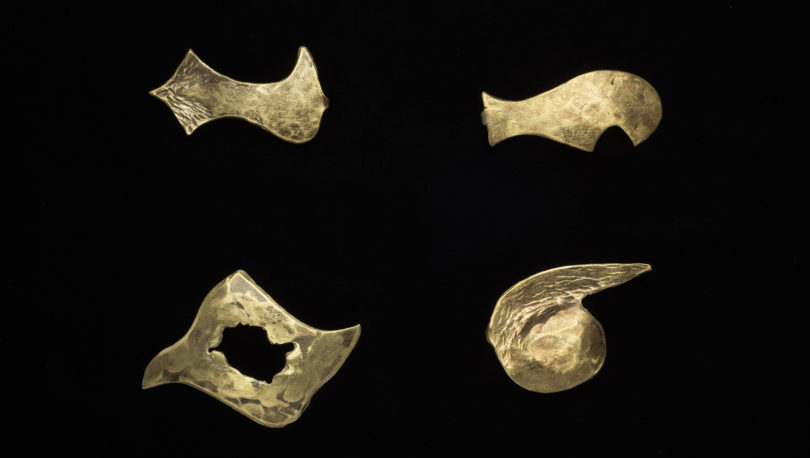Humans have been crafting and wearing jewelry for the past 5,000 years. These objects of adornment serve as symbols of class, family, gender and originality. More than mere accessories, the miniature sculptures worn on one’s person celebrate the union of craft and materials. Artists have built upon both old and new techniques to create jewelry that enriches the experience for the wearer and viewer. The exhibition “Sculptured Adornment: The Jewelry of David Hayes” focuses on the work of a sculptor who branched into jewelry-making during the 1950s. Opening at the Georgia Museum of Art at the University of Georgia on May 4, it will run through July 28.
The jewelry included in the exhibition primarily served as gifts for Hayes’ family members and friends. These unique objects represent the love and care cultivated between individuals over time. Hayes was born in 1931 and grew up in Connecticut during the Depression and the Second World War. He left New England for college in the Midwest, earning a bachelor’s degree in art from Notre Dame in 1953 and a master’s in 1955 from Indiana University. Hayes was awarded a Fulbright scholarship and spent eight years in France. Along the way, he met several artists who influenced his skills and aesthetics, including the sculptors David Smith and Alexander Calder, both of whom created abstract works.
The exhibition includes approximately 40 brooches and pendants. Most of the brooches do not have clasps, leaving flexibility for the wearer in determining how to attach them to clothing. Hayes created amorphic and distorted shapes that evocatively reach into three-dimensional space. His sculptures combined seemingly organic shapes with industrial materials. These works are large and monumental, while his jewelry is small and delicate.
“A confirmed modernist, Hayes often experimented not only with materials and processes but also with meaning,” said William U. Eiland, director of the museum and curator of the exhibition. “His interest in the art of fabrication extended to his ideas of sculptural adornment, where it is abstract in shape, novel in technique and organic in spirit.”
Hayes’ jewelry is meant to resemble talismans of ancient traditions. The hammered surfaces bring the strength and mystery of iron-shaping into the 20th century. Both naturalistic and abstracted elements communicate an otherworldly aesthetic.
Related events at the museum include:
- A public tour by Eiland on July 9 at 2 p.m.
- A Teen Studio program on July 11 from 5:30 to 8:30 p.m. led by local artist and educator Kristen Bach (free and includes a pizza dinner but register at sagekincaid@uga.edu or 706-542-8863)
- 90 Carlton: Summer, the museum’s quarterly reception, on July 19 from 5:30 to 7:30 p.m. ($15, $10 for Friends of the Museum and Supporters, free for current members; galleries open until 8:30 p.m.).
All programs are free and open to the public unless otherwise indicated.








